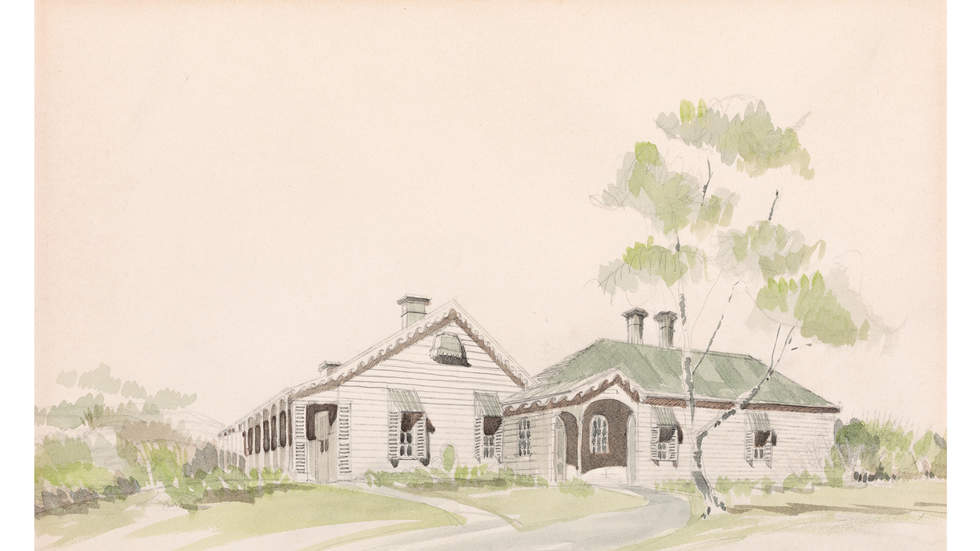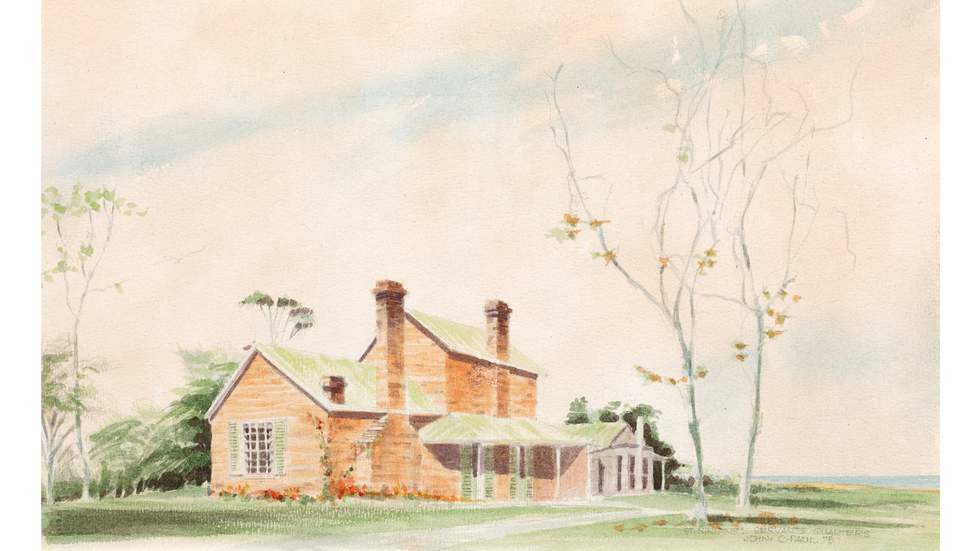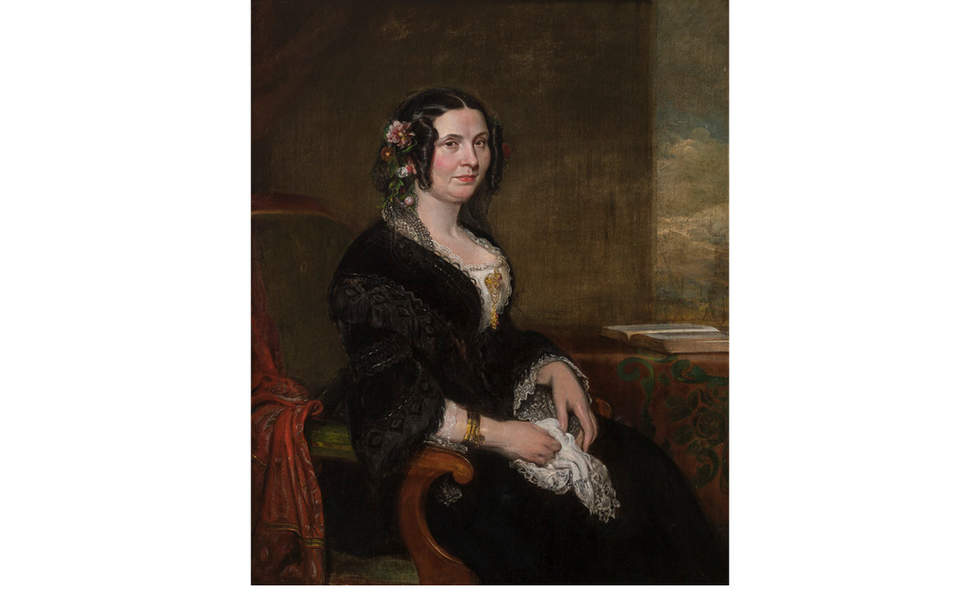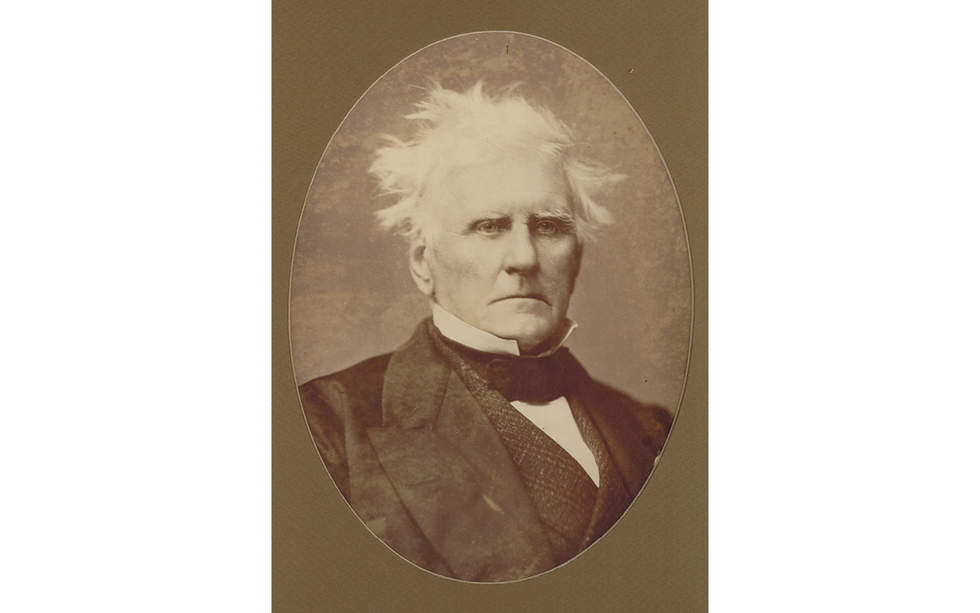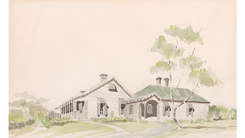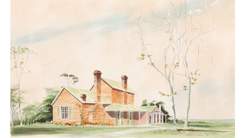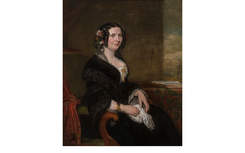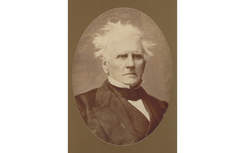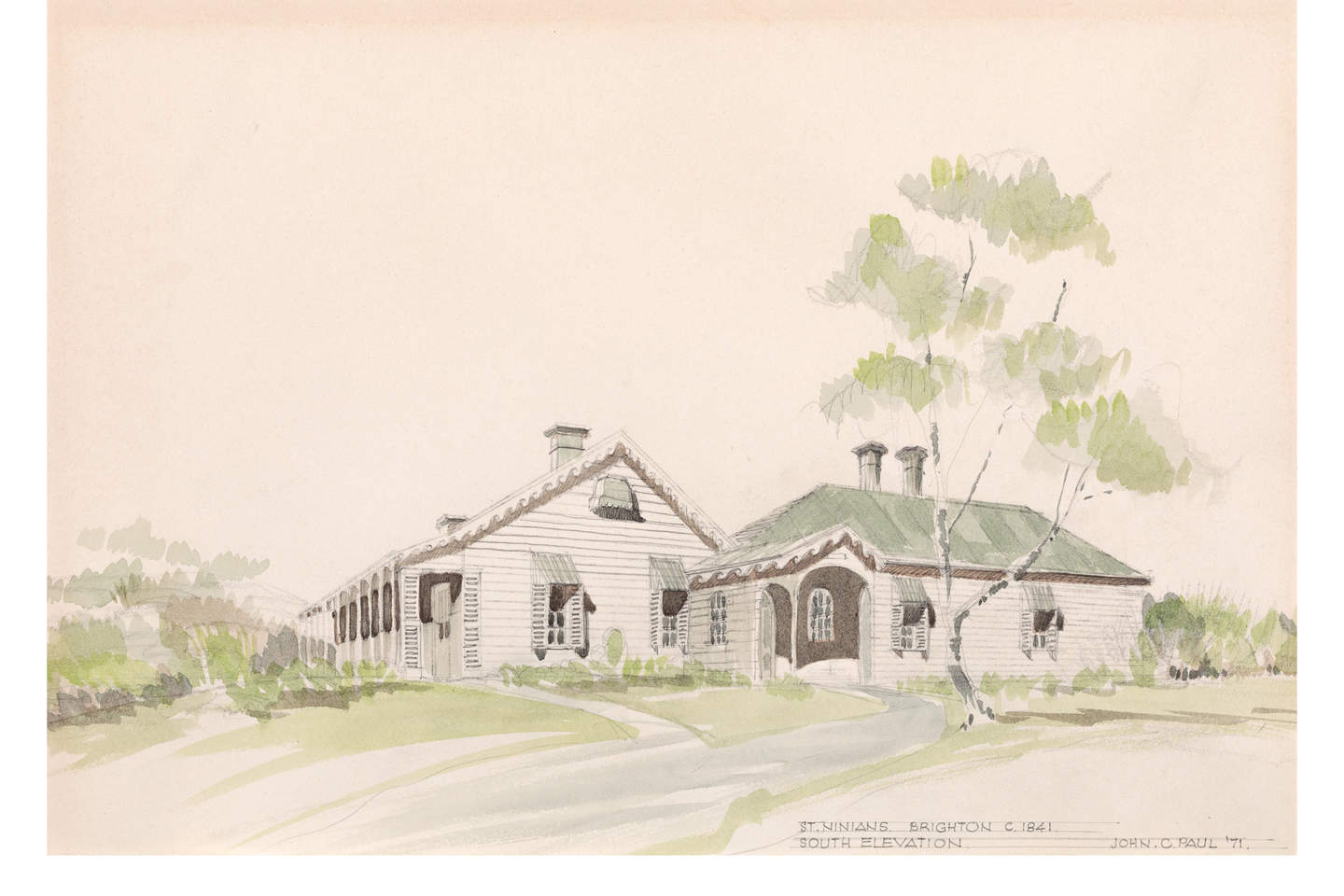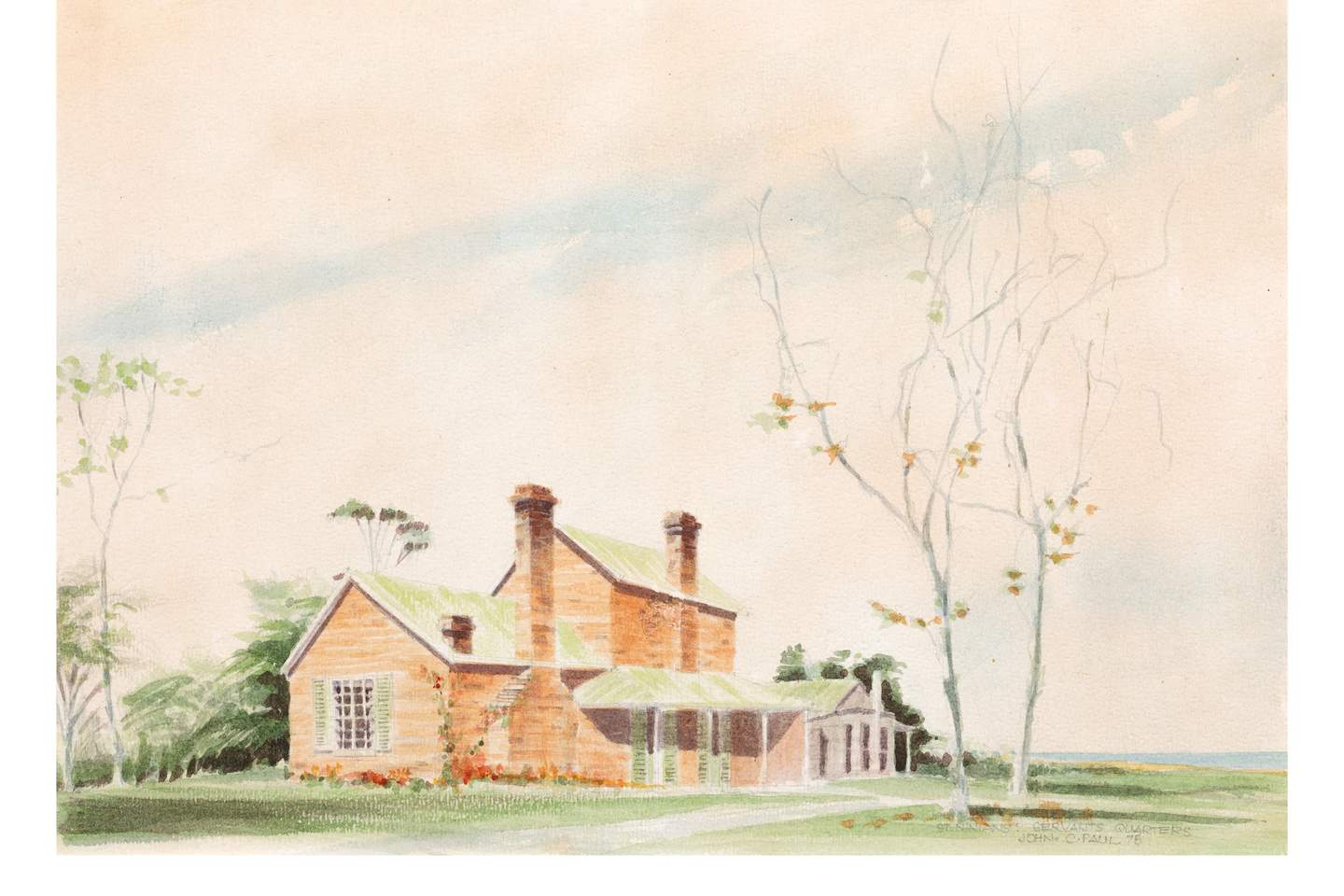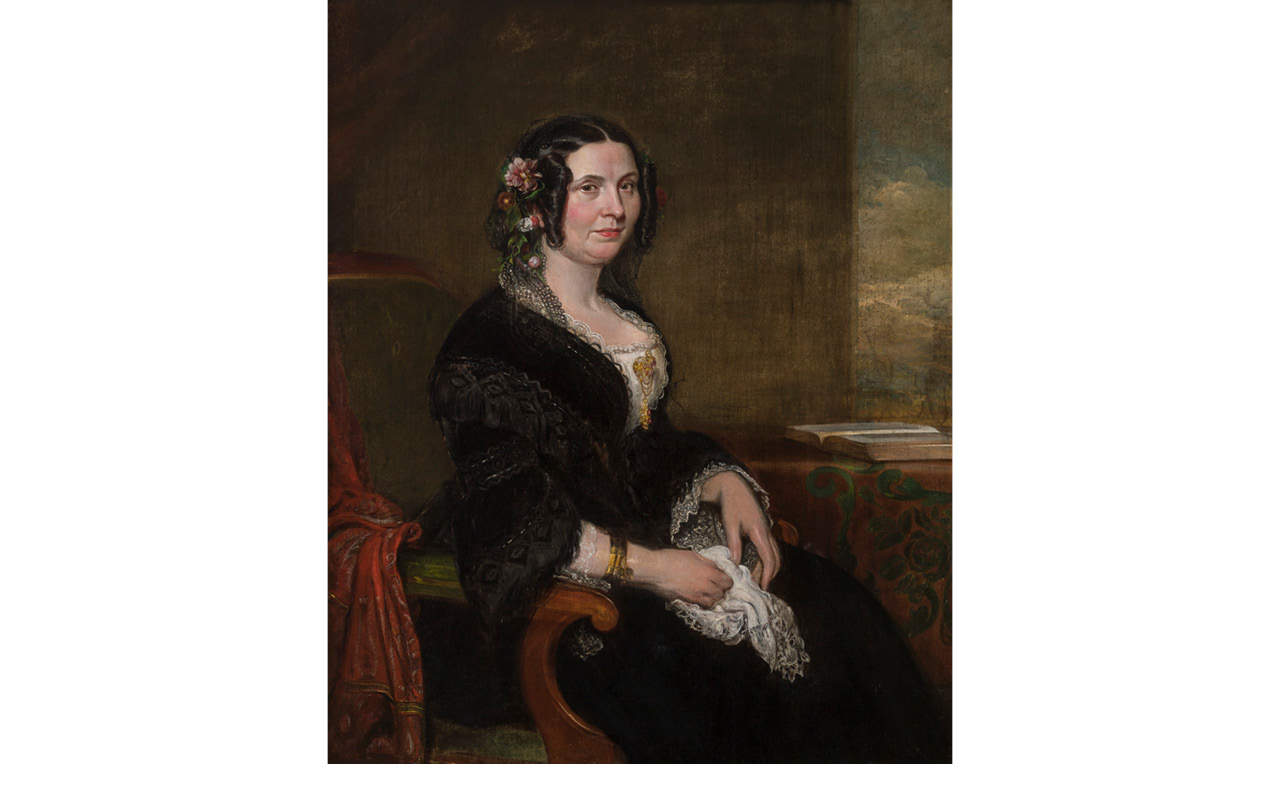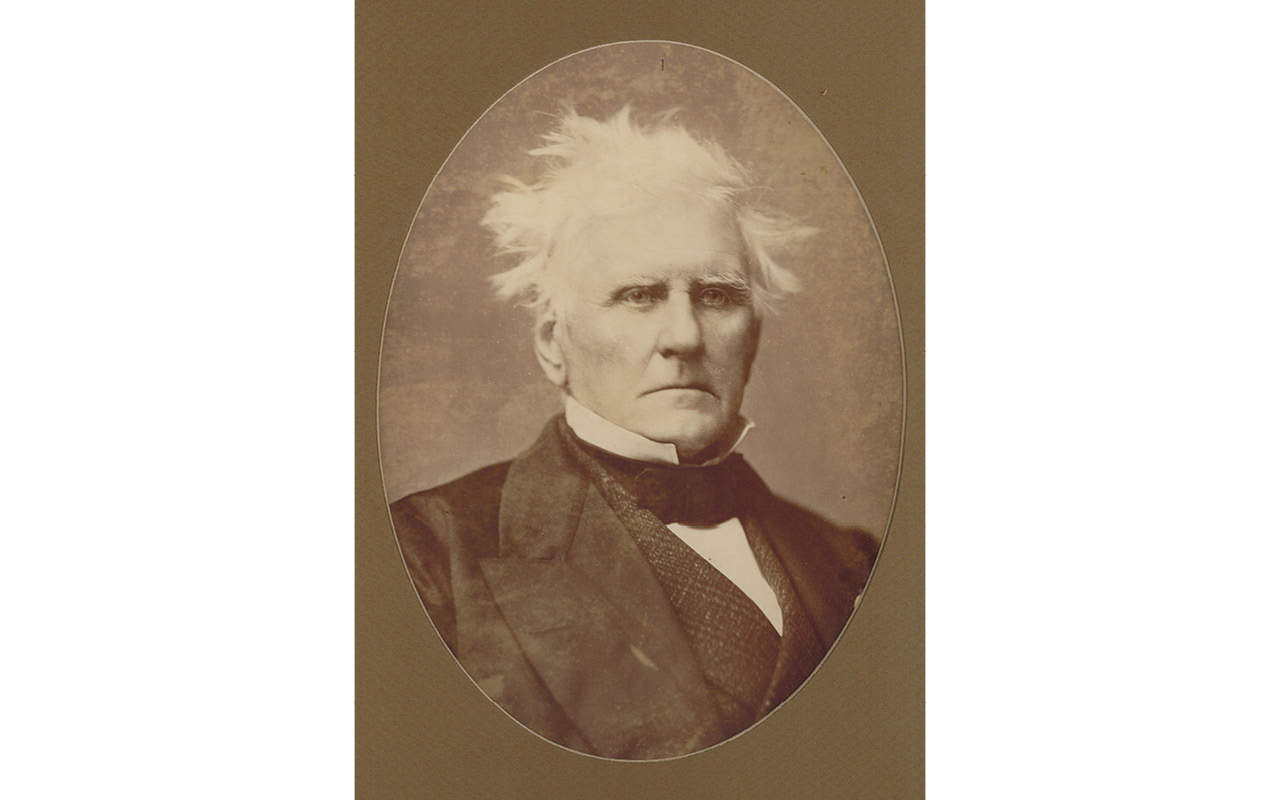Spotlight on the Collection: George Ward Cole and St Ninian's
This week we look at the renowned merchant shipping agent, politician and former British naval officer, George Ward Cole and his family seaside home St Ninian's. Built around 1841 St Ninian’s, located at 10 Miller Street, was one of Brighton’s earliest buildings. It is best known as being the home of merchant shipping agent, politician and former British naval officer, George Ward Cole and his family between the 1840s and 1902.
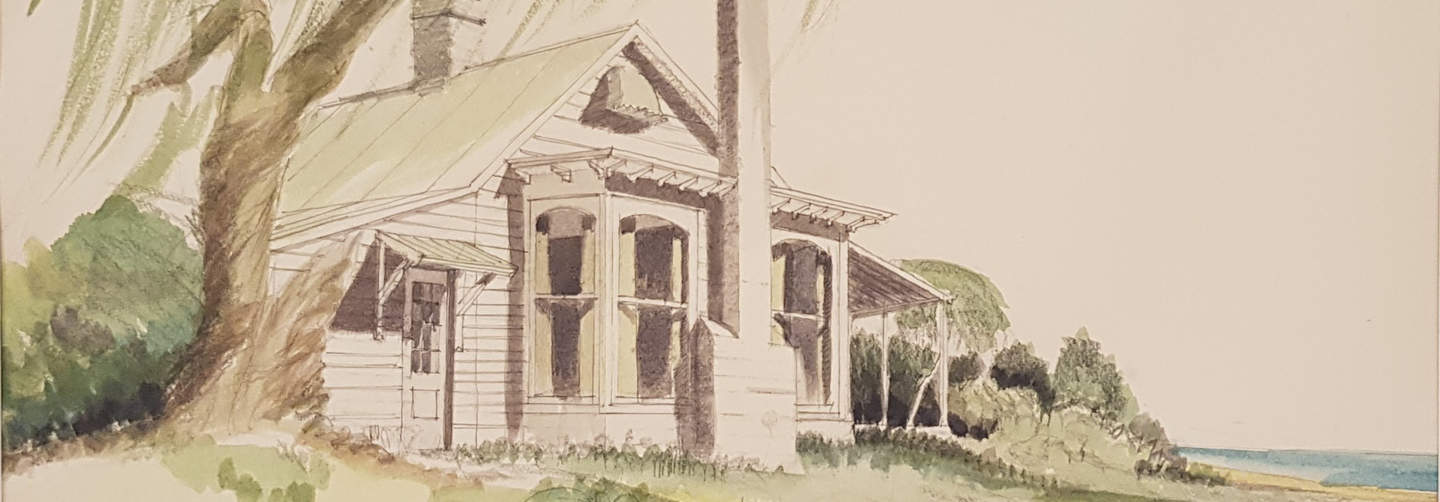
John C. Paul, St.Ninian's north elevation c.1841 (detail) 1971, watercolour, 29.5 x 42.3 cm. Bayside City Council Art and Heritage Collection, purchased 1974.
George Ward Cole
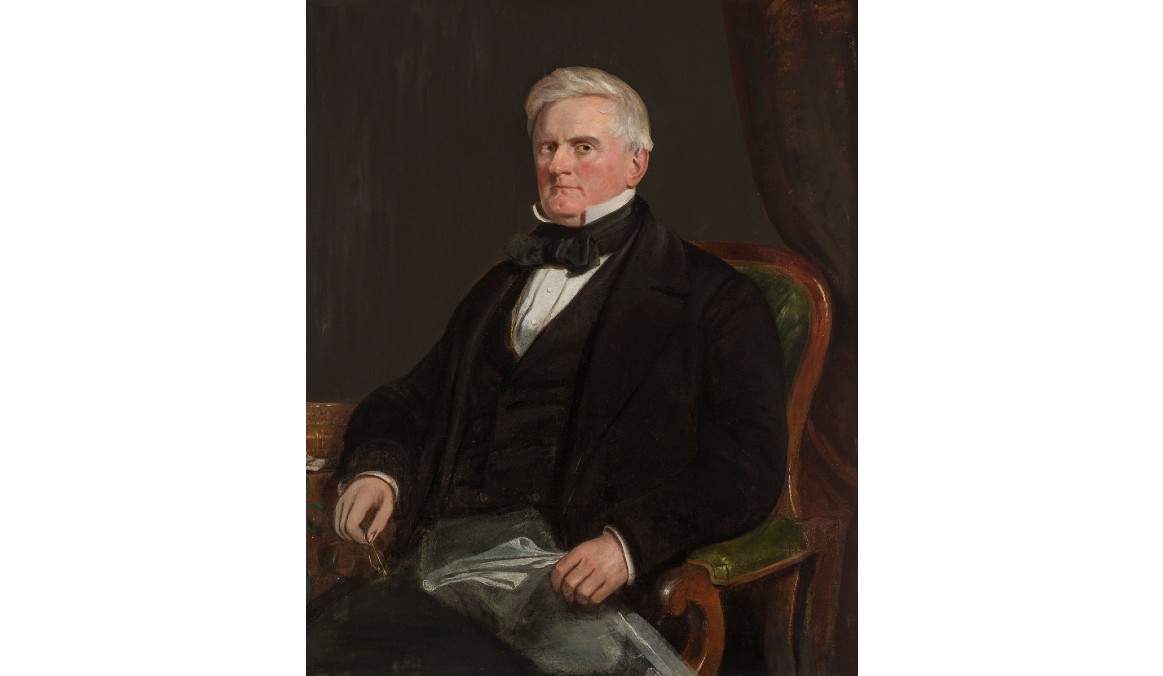
John Irvine, Mr G.W. Cole, c.1858, oil on canvas on board, 110 x 90 cm. Bayside City Council Art and Heritage Collection.
George Ward Cole (1793-1879) was born at Lumley Castle in England and began his career in the British Navy before becoming a sea merchant. After many years of adventure and travels, Cole moved to Australia in 1840, deciding he wanted to put down roots. He first bought land in Sydney before settling in Melbourne.
He purchased land along the Yarra River and set up Cole’s Wharf in Flinders Street West. In 1842 he married his second wife Thomasina Anne McCrae (pictured below) and honeymooned at his recently built seaside property St Ninian’s at the new township of Brighton. In 1851 Cole built the ‘City of Melbourne’, the first auxiliary screw steamer to be built south of the equator and soon owned and co-owned a number of steamships and became the chairman of the Port Phillip Steamship Navigation Company. In addition to his shipping interests, Cole bought up land throughout Victoria including in Williamstown, Footscray, Frankston, St Leonards and Gippsland.
In 1853, his interest turned to politics and he was elected to the Legislative Council as the member for Gippsland, resigning in 1855 to travel to England. Upon returning to Melbourne in 1857, he was elected to present the Central Province in the Upper House, and retained this seat until his death.
Cole was also involved in the horticultural industry; he introduced sugar-beet to the colony in 1863, was a pioneer in the use of seaweed as a fertiliser and advocated for the establishment of agricultural training schools.
Cole was active in a number of important community affairs at the time including debates over defence, unemployment, deepening the Yarra River, advocating for railways, the development of the Harbour Trust, and even the Constitution.
Still in full possession of his faculties and a Cole died in his Brighton house at eighty six years of age. George Higginbotham, Chief Justice of Victoria, wrote of Cole after his death:
"He was always thinking of the public welfare, and was never wearied in advocating measures which he thought calculated to promote it... No politician in recent Australian history appears to present a record of purer and more sincere patriotism, or of more unselfish and benevolent political action than Captain George Ward Cole."[1]
St Ninian’s, Brighton
These images appear larger in the gallery box
Built around 1841 St Ninian’s, located at 10 Miller Street, was one of Brighton’s earliest buildings. It is best known as being the home of merchant shipping agent, politician and former British naval officer, George Ward Cole and his family between the 1840s and 1902.
Located on the seafront to the right of Bay Street, St Ninian’s was known for its Singapore Teak wing. It is likely that this portion of the building was prefabricated in Singapore, an example of the spread of building techniques and house forms across the British Empire, often via sea merchants such as Cole.
The twenty four acre property originally consisted of the main house, a detached brick kitchen with servants’ quarters above, a coach house, laundry, a croquet lawn, a large orchard and kitchen garden.
During the 1850s, St Ninian’s became a fashionable haunt for many important social identities who shaped Melbourne’s history. Victoria’s first royal visitor, Prince Alfred, the Duke of Edinburgh, was a guest here in 1867.
Following the death of George Ward Cole in 1879 and his wife in 1898, their only surviving child, Margaret, sold the property to Sir Thomas Bent, who subdivided the land in the early 1900s. The property was demolished in 1974. A plaque commemorating George Ward Cole is located along the Bay Trail near the original site of St Ninian’s homestead.
The four watercolour paintings of St Ninian's featured in the above gallery were completed by John C. Paul, a local artist and architect who live in Brighton in the 1970s before retiring to Point Lonsdale. As the former President of the Brighton Historical Society, Paul had a great interest in the heritage of the area, so he painted a series of works on historic Brighton homes that showed how they would have looked when they were first built. The series was purchased by Brighton City Council in 1974.
_________________________________________________________________________
[1] George Higginbotham, quoted in Isaac Selby, The Old Pioneers’ Memorial History of Melbourne, Melbourne: The Old Pioneers Memorial Fund, 1924, p.248
Interested in learning more about the Art and Heritage Collection?
Bayside City Council is the custodian of the Bayside Art and Heritage Collection, a collection of around 2,000 items that was principally formed when the former Sandringham and Brighton City Councils merged in 1994. Artworks and heritage objects are displayed at our Corporate Centre in Sandringham, Bayside Gallery in Brighton and other Council owned buildings.
Do you want to know what's on in Bayside?
Subscribe to the Bayside Arts e-newsletter and you'll receive the latest news, public program information and invites to exhibition openings.
